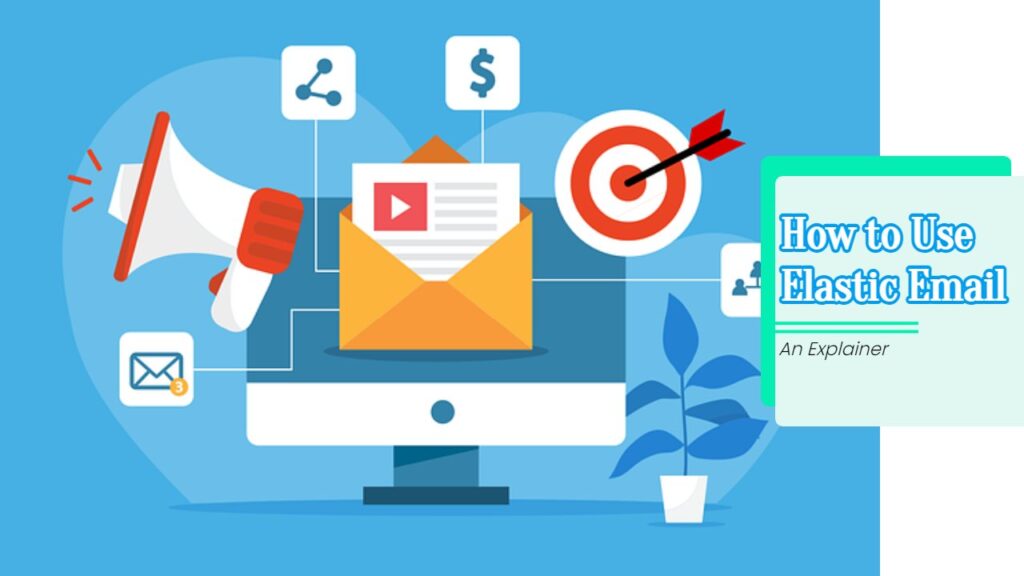Strategic marketing allows an organization to focus limited resources on the greatest opportunities. This can increase brand awareness, get you leads, improve sales and create a sustainable competitive advantage.
What is Strategic Marketing?
Without an organized marketing campaign in place, you are just doing a bit of guest posting, bit of outreach, trying to improve your brand a bit via HARO, but getting nowhere in the long run.
Marketing is not all that. In order for any marketing campaign to succeed, it has to be extremely strategic in nature. And, that is what strategic marketing is all about.
Breaking Down Strategic Marketing
The process of developing a marketing strategy involves identifying the right audience, preparing a marketing plan, and identifying tools that can help. Strategic marketing is an integral part of any startup’s success.
Strategic marketing is the process of planning, implementing, measuring and managing all aspects of a firm’s marketing activities so as to achieve its strategic objectives.
Strategic marketing employs a comprehensive approach that integrates all elements of the marketer’s business into the market-building process.
Strategic marketing encompasses all dimensions of competitive positioning in order to create value for customers and enhance profit over time.
It includes traditional advertising and public relations strategies, but also embraces broader concepts such as brand building, product development, innovation management and customer relationships management (CRM).
Strategic marketing has four main components:
- Market research
- Content creation
- Campaign planning
- Communications strategy

I absolutely utilize the 7Ps framework – product, price, place, promotion, people, process, and physical evidence. Though laborious, it’s critical for effective marketing.
I constantly evaluate and refine my product offerings. Pricing balances profits and fair value. Promotion strategically gets the word out across channels. Place ensures accessibility through proper distribution. I focus on customer service training for people. Streamlined processes increase efficiency. Physical evidence like branding reinforces our image.
I diligently track metrics for each P. Last quarter’s promotion campaign drove 5,000 new website visits and 15% higher sales. The 7Ps keeps me organized and intentional about comprehensive marketing.
Gagan Saini, CEO of JiT Home Buyers
Planning your Marketing Efforts
If you want to see strategic marketing in action, you need to first plan your marketing efforts carefully.
Marketing strategies have many different components. For example, a marketing strategy should consider the target audience via thorough market research, the product through creation of proof of concept, MVP, prototype and design thinking methodologies, the competition through a thorough PESTLE analysis of your business plan, and the industry via the Porter’s Five Forces analysis.
In addition, it should take into account the company’s strengths and weaknesses. It can also help you identify opportunities to target new segments of the market. Your marketing strategy should be specific, measurable, and focused.
First, plan the resources you’ll need to achieve the goals of your marketing efforts. You may need to print and distribute brochures, or you may need to hire salespeople.
You may also need to have several digital marketing plans up in place, as well as digital marketing tools at your disposal, such as sales outreach tools, CRM tools, sales prospecting tools, email marketing tools.
Your plan should also consider the cost of each activity. Keep in mind that your marketing budget may be limited and you don’t want to spread your marketing activities too thin.
That’s a good way to manage your startup’s finances and improve upon it by focusing on the ROI while also ensuring that there is enough room for working capital management.
As a result, it’s important to choose marketing activities carefully, and to link your marketing budget to your sales forecast.

The Marketing 7Ps is an integral part of my strategy at Businessmap. Each ‘P’ in the model—Product, Price, Place, Promotion, People, Process, and Physical Environment—plays a distinct role in our overall inbound marketing strategy.
We’ve shaped our product alongside customer needs and feedback, using user data and surveys to refine it continually—a practical example of ‘Product’ in the mix.
The ‘Price’ aspect is optimized using price sensitivity analyses to ensure we provide value for money. ‘Place’ in our context is the digital landscape. We optimize our online presence, ensuring our website and content are easily accessible and visible, often by leveraging SEO and SEM techniques.
For ‘Promotion,’ we employ a range of digital marketing techniques, including content marketing, social media engagements, and strategic email campaigns. The ‘People,’ our team, are trained to convey product value effectively, empathize with customer concerns, and build strong customer relationships.
As for ‘Process,’ we automate parts of our customer journey, like follow-up emails and content recommendations, and iterate these based on data. Lastly, our ‘Physical Environment’ for most customers is our software interface, which we strive to make user-friendly and intuitive.
We track the impact of these strategies using a mix of performance analytics, conversion rates, and customer feedback. Over the past year, we’ve seen a 30% increase in lead conversions and 20% growth in customer retention, signifying the usefulness of the Marketing 7Ps in our framework.
Gabriel Lukov, Head of Inbound Growth of Businessmap
Knowing your Audience
Knowing your audience is a key component of strategic marketing. It can help you resonate with your audience, and develop brand loyalty and advocacy.
You can learn about the needs of your audience by reviewing current data and customer interactions. In such cases, having the right business intelligence tool is key.
You can also conduct surveys to gain more insights.
Here are some tips to know your audience better:
- Know your audience’s pain points. It can help you understand what is their current situation and what sort of solution do they need to alleviate their troubles. Ideally, your marketing message should make people feel as if you are reading their mind.
- If you are unsure, what sort of market research, you should focus on, learn more about the best market research tools that you should use based upon your startup’s needs.

Incorporating the Marketing 7Ps into our strategy at DesignRush has been pivotal—not merely laborious—for the growth and visibility of our brand.
These fundamental principles are finely interwoven into our daily operations and long-term objectives. Regarding product, our B2B marketplace itself is continually evolving to meet demands and bring added value to our clientele.
For the ‘price’ and ‘promotion’ factors, we employ various tactics like competitive pricing and a blend of SEO, content marketing, and social media promotions.
Place and physical evidence translate into our robust virtual presence and a user-friendly platform that’s demonstrative of our capabilities. For ‘people’, we believe the right team makes the difference; thus we invest heavily in hiring, training, and maintaining an engaged workforce.
‘Process’ governs our operations, from client-agency matching to after-sales service. Monitoring results is critical for us, and we do that through metrics like engagement rates, traffic, session duration, and conversion rates.
Our approach has resulted in a 30% growth in platform visitors and a substantial increase in our conversion rates over the past year.
Gianluca Ferruggia, General manager at DesignRush
Developing a Strategy for Your Marketing
Developing a marketing strategy for your business is an important step toward achieving your goals.
It will help you expand your customer base and introduce new products and services to your existing customers. It will also help you determine the target audience for your product and the most effective way to communicate it.
Your marketing strategy will also help you evaluate the financial feasibility of new products or services, and the resources necessary to launch them.
In addition to a marketing strategy, you must develop a detailed profile of your target audience. By doing so, you can develop a plan that will have maximum impact.
It is also important to conduct market research to understand your target audience.
Creating a Marketing Plan for Your Strategic Marketing Efforts
The marketing plan is a strategic document that helps you understand the goals and objectives of your business and where it fits in the market. It helps you understand the role your product or service plays in the marketplace and how it can be used to meet consumer needs.
A marketing plan is a document that outlines your marketing strategy, which includes objectives, strategies and tactics. It’s a roadmap to help you achieve your business goals.
Here are five steps to creating a marketing plan:
- Define your target audience and the problem your product or service solves.
- Identify your competitors and their strengths and weaknesses.
- Analyze industry statistics for trends in the marketplace and how those trends affect you as a business owner or entrepreneur.
- Create an action plan for what you want to accomplish through marketing activities over the next year (or longer) including where you’ll place your resources and how much time you’ll spend on each activity or event (who will be involved, when they need to be involved, etc.).
- Create a budgeting structure so you know how much money you can allocate toward each step of the process.
In this regard, ensure that your strategic marketing efforts follows the 7Ps in marketing mix and the 3P rules in marketing.

Strategic marketing involves a deep understanding of market dynamics, customer behavior, and competitive landscapes to create and implement plans that achieve long-term business goals.
It’s about aligning marketing initiatives with the broader business objectives and continuously adapting to the changing market conditions. Many businesses claim to use strategic marketing, but in practice, they often fall into the trap of short-term, reactive tactics rather than focusing on long-term strategies.
A true strategic approach requires sustained efforts and investment in understanding and predicting market trends.
An example of a strategic marketing campaign I witnessed was for a tech company launching a new smart home device.
The company used a mix of targeted social media advertising, influencer partnerships, and pre-launch content to build anticipation. Post-launch, they shifted to customer education and community-building efforts to increase product adoption.
The results were impressive: the campaign generated a 40% increase in product sales in the first quarter post-launch, with customer retention rates improving by 25% due to the supportive community strategies. This multi-phased approach was planned a year, showcasing the power of a truly strategic marketing initiative.
Vaibhav Kakkar, CEO and Founder of DWS
Tools available to help you prepare a plan
When preparing your strategic marketing plan, there are many resources to help you. Many of these tools help you cut down on repetitive tasks and organize important information.
They also make it easier to collaborate with other team members and coordinate marketing campaigns. These tools will help you create an effective plan and implement it in your business. Some of these tools are Trello, Evernote, AgoraPulse etc.
I personally use Evernote and a sketchbook (just a normal sketchbook. Definitely not a digital tool!), Buffer and Convertkit to plan out my marketing.
HubSpot also offers a cool marketing template that can help you brain-dump your thoughts on planning your marketing efforts.
Once you have a plan, it’s important to measure your efforts. You can track your marketing activities through the use of conversion rate optimization software or analytics tools.
Use data that is relevant to your industry and business goals. Since your marketing goals may change over time, it’s important to review and update your plan periodically. This can also help you avoid marketing myopia and spot which of the seven marketing functions are you falling back on. Eitherways, nowadays, there are several AI software across all these categories that can simplify your work by a great margin.

As the founder of The Credit Review, I’ve come to understand that strategic marketing is about aligning your core business goals with your marketing messages, approaches, channels, and marketing strategy.
In our company, this strategic approach to marketing manifests itself through careful planning, benchmarking, tracking and consistently iterating based on emerging data. One concrete example I can provide is our savings strategy campaign, where we observed that a key business objective was to increase the usage of our savings account comparison tool.
With this goal in mind, we launched a multi-channel campaign providing educational content on savings strategies along with promoting our comparison tool. Through this strategy, we saw a significant increase in tool usage: a 30% rise quarter-on-quarter.
Looking ahead to 2024 and beyond, AI is set to redefine strategic marketing. As financial tech challenges become more intricate, AI can streamline customer segmentation, tailor content to individual preferences, and optimize conversions by predicting consumer behavior, thus proposing a more targeted, effective, and strategic marketing approach.
Andy Chang, Founder of The Credit Review
Costs of Implementing a Strategic Marketing Initiative
The costs of implementing a strategic marketing strategy vary depending on what your business goals, vision and mission and business strategy are.
The cost of implementing a strategic marketing initiative is not as high as you might think. A lot of people underestimate the time and effort it takes to create an effective marketing plan, but it’s actually quite simple.
You’ll need to create an outline of how the proposal will be structured, what the goals are and how you’re going to achieve them. You’ll also need to consider how much money each part of your proposal will cost, as well as any legal requirements that may affect its scope.
Once you’ve got all this information in place, it’s easy for you to calculate how much it’s going to cost for each stage of your proposal. You can then look at your budget and allocate money accordingly.
The first step in calculating these costs is to break down your expenses into three categories:
- Ongoing expenses
- Capital expenditures (wages, materials)
- Soft costs (marketing support, training, etc.)
These costs can include advertising, production, and distribution costs.
One way to reduce your costs is to change the focus of your marketing strategy, perhaps shifting from advertisements to word-of-mouth promotion.
The key is to find what works best for your business.
Either ways, using strategic marketing for your business, is sure to work wonders. Let me know in the comments, if you have any questions and I’ll help you out immediately.
Also, if you would like to help implement strategic marketing for your business, send us an email at adhip@winsavvy.com.
Read Next:
Best Email Marketing Software for Small Businesses



















